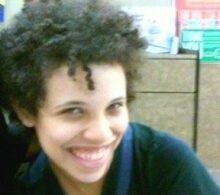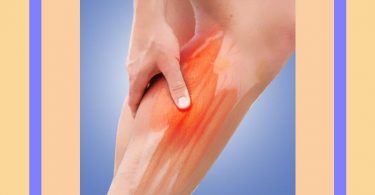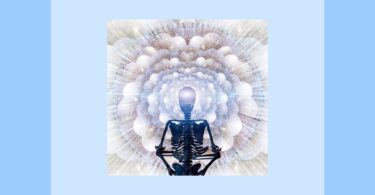A boy aged 16 years from a poor family was brought to us with a complaint of acute pain and tumor like swelling on posterior aspect of right thigh following injury, with no external signs of any injury. He had fallen from a bicycle in his native place and had been injured in the right thigh about 4 weeks back. He was treated by a local doctor. After 1 week of mild pain very severe excruciating pain started occurring at the place of injury and he was again treated with anti-inflammatory tablets and painkillers. After about 15 days he fell down whilst playing and got injured at the very same place.
He started getting severe excruciating pain at the same place every evening for which he was hospitalized and had to be given painkiller injections every day. He then came to Mumbai on a vacation and stayed with his elder brothers. He was one of four brothers. Father had expired 10 years back. Mother was working hard to earn a living. He was one of the twins. The other twin brother was very close to him. They were very attached to each other and he could not stay without him but as the twin brother was not good in studies, he discontinued his studies and came to Mumbai for work. This boy was very good and sincere in studies and stayed back in his native place. After this separation (4 years back) this boy became sad, quiet, never talked to anybody, sulked and had gradually developed low fever almost daily.
He was afraid of his eldest brother who was strict and occasionally got a beating from him. This boy was a brilliant student and scored well in languages. He did not like mathematics and would get low marks, which was the only reason for him to be punished. In his native place he never talked to anybody except his mother after the departure of his twin brother. He was so reserved and secretive that when he came down to Mumbai on vacation he did not even disclose to his elder brothers that he had an injury or was hospitalized prior to coming. It was only because of his limping gait that the brothers came to know about his injury. Within 3 days of arrival the pains increased so much that he had to be hospitalized in Mumbai again. There was no fracture detected but the allopathic treatment was not able to give him relief. Probability of osteo-sarcoma loomed large and hence they were contemplating a major surgery.
When the child was brought to us in the outpatient department, this child sat with his head down hardly looking up and hardly talking to us. Answers were given in monosyllables without looking up. He was short and thin even at this age of 16 years compared to his twin brother who was almost double his height. He had stopped growing after his brother left the village & came to the city. He refused to comment on what he felt after his brother left.
His personal likes and dislikes were very clear. He hated cold weather, as he could not tolerate it at all. He hated sun, which gave him headaches. He was completely thirstless and had strong aversion to milk.
HISTORY PROBING:
It is often useful for us to probe the immediate cause thoroughly. The injury to thigh-history is simply not sufficient. The way or circumstances during the injury and the reaction of that boy to it tells you so many things about his constitution. The boy was asked how he fell down from the cycle
– Was he learning to cycle? Or was he pushed down by somebody?
– Or was he trying to do acrobatics? Was he rash?
– Was he trying to knock somebody else down in mischief. After he fell down what did he do?
– Did he just pick up the cycle and start riding again?
– Did he get so angry on the cycle that he started kicking the cycle? Or did he get up and bang the cycle tyre against the wall?
– Did he get so frightened that he did not get up from there and called for help or did he just let the cycle be there and go home and cry?
He just got up, picked up the cycle, returned it to the owner, paid his dues for an hour though he had cycled only for half an hour, and went home.
Even if it is an injury or bad effects from injury a genuine Homeopath would like to ascertain what constitution the patient or the injured man is likely to be. The knowledge of constitution will let him know predictively, how the bone is going to behave on being injured and it is the knowledge of the reaction or behaviour of the injured person, which is going to help him assess the constitution.
It is so easy to prescribe Arnica, three times a day or Symphytum or Ruta or Calc-fl. etc. repeatedly. These will act only if the injury is not grave and it has not had a constitutional effect and grown or is threatening to grow into malignancy. Nor can it prevent the constitution from developing into rheumatoid arthritis etc. Hence the sphere of action of the use of such acute injury drugs prescribed on the history of injury alone and not having a matching general, mental, particular picture shall be of help only in psoric constitutions where the constitution is strong enough to resist any suppressions. In such cases it has been seen by me that it is always better to let the patient’s constitution recover by itself rather than interfere, so the best possible result is achieved by keeping the patient on placebo. Injury to joints, say knees, treated blindly with Arnica montana or Bryonia alba or Rhus tox have inadvertently or unknowingly been seen to proceed after a primary relief of pain into lumbo-sacral spondylitis and further either into widespread multi-joint arthritis or progressively changing into a different sphere say cardio-vascular (3rd layer to 4th layer of suppression) and the patient starts exhibiting hypertension or ischaemic heart disease. The Arnica-Bryonia-Rhus tox prescriber is blissfully unaware of such a symptom transfer which is of his own making, primarily. This is because of blatant violation or bending of homoeopathic law of cure – ‘Similia Similibus Curantur!’. The symptom similarity, if one argues, is only local. Every individual or every constitution gives back a reaction to an injury befitting its basic nature. This reaction is individual not only at the level of mentals (i.e. the attitude towards suffering) but also at physical level i.e. at the level how tissue will behave or react to the injury. This in turn is wholly dependent on the predominant miasm which is ruling the constitution at that time.
In the above mentioned case the miasm has forced the tissues especially the bone to grow in the form of tumor and that too in a concealed manner, slowly and insidiously. The same miasm is reflected in the behavior of the boy where he is so secretive, so closed, so untalkative though so deeply injured. He did not complain or reveal the injury or even his hospitalization (a major incident) to his brother. His miasm now amply clear – a strongly sycotic one is the one which has had sway over his life process since last many years keeping him stunted and not allowing him to grow. This sycosis was now threatening to move or to degrade to the more dangerous and destructive of its miasmatic brethren – the syphilitic miasm.
The threat of invasion of the syphilitic miasm was in dynamic form not yet settled as syphilis as was demonstrated by the pains coming on after sunset only, forcing him to take painkiller injections. A tolerant non-complaining child being tormented to such an extreme of making him resort to painkiller injections at night when gleefully playing in the day time was a definite warning by the constitution that it is threatening to go syphilitic i.e., towards destruction – the dreaded combination of ‘sycosis and syphilis’ building upon an injury or irritation (psoric). Discontinuity of a normal tissue is what develops into malignancy or cancerous growth.
If his constitution was syphilitic, the predominant syphilis miasm in the above case would have given rise to a very destructive lesion both in terms of skin and bone. In short, a strongly syphilitic constitution would have presented to us with destruction of epidermis, dermis and muscles as a very ragged or jagged or not clear-cut demarcated, lacerated, wound bleeding on touch and with an underlying multiple fracture of the bone.
A psoric would have shown abrasions of superficial type with intense nervousness in attitude, telling everybody of his complaint and being anxious of prognosis.
This boy allowed not only me but all the other students and doctors to examine him without much fuss.
Our one job was over, We needed a simillimum which was ‘sycotic in miasm’ ……(1)
Now we proceeded to find out what are the innate or inherent characteristics or non-diseased natural traits exhibited by the genetic code. These were going to be the basis of our genetic
constitutional simillimum [the remedy exactly similar to the case].
These innate natural characteristics should be pronounced and obvious. They should be agreed to by all physicians and relatives present. They should not be fictious or figments of a physician’s
imagination. The innate characteristic should be preferably a large rubric bearing more than 250-300 remedies. Thus even a lesser known remedy is not excluded from being considered as the simillimum e.g. Timidity, Mildness, Violence, Vivaciousness, Talk indisposed to etc. Right observation also plays an important part in considering the innate characteristic.
The main characteristic i.e. the pivotal rubric should be observed, analysed and understood in proper perspective. It need not necessarily be announced by the patient.
Are you shy, timid, bashful? Or are you haughty? Are you a coward? Are you reserved or vivacious etc. Such leading questions can never benefit a history. A really haughty person shall never admit that he or she is haughty because it hurts his/her image. She sees nothing wrong in her approach and behavior with others and whatever wrong behavior she exhibits, is strongly attributed as her reaction to bad behavior of others which she thinks is quite natural.
Keen observation with a broad spectrum view of what has happened to the person in the past and present, and the reaction to the circumstances helps us to analyze his reaction in proper perspective and choose a befitting natural, innate, mostly non-diseased characteristic rubric.
A reaction of an individual constitution is like how a substance (wood, tin, iron, glass, cotton etc.) will behave when exposed to the same action or stimulus. If we hit a fist on wood, tin, iron, glass, cotton pillars etc., even on being blindfolded a man with normal intellect or intelligence will be able to differentiate and diagnose the substance hit upon. Similarly a homoeopath has to develop natural instinct or trait of understanding to know and differentiate how different remedies, by virtue of their natural characteristic, will behave or react in the same situation or under similar stimulus.
(A) In the Probe of the Circumstances of the Injury.
– Since the boy was learning to ride a bicycle at the age of sixteen, it shows us that he ought to be either, a CAUTIOUS or a TIMID child like a Calc, Sil, Puls, Baryta, Bufo etc. (slow learner). He did not learn cycling up to his teenage years.
– If the boy was playing acrobatics e.g. leaving both the hands while riding or standing on the seat or sitting facing back etc., it shows a dare devil character ready to take risks or a show off (Platina, Lachesis, Belladonna, Mercurius, Nux-v.) or a mischief monger or an antic player
(Playing Antics -Mercurius, Hyoscyamus, Opium, Veratrum, Belladonna) or rash, heedless, courageous; or revolting character (Mercurius, Opium, Tarent., Tuberculinum). He may also be a boy with either less intelligence or whose sense of right and wrong is abolished, like a Baryta carb. or Anacardium who are not bothered about the consequences.– If he was trying to knock down somebody, is he mischievous, destructive, malicious or inciting (like Hyoscyamus, Lachesis, Cann-lnd., Nux-v., Merc-sol., Tarentula etc.)?
(B) Reaction to Action (Accident): What did he do after the accident?
– If he just picked up his cycle and rode again, it shows quite a balanced individual taking everything into his stride, not discouraged easily.
– Trying to damage the cycle shows a child of angry temperament, aggravated by contradiction; destructive, malicious etc. probably a syphilitic remedy.
– Sitting, crying and calling for help does not project a strong character and probably shows a soft, timid, mild, weeping easily, discouraged, anxious, fearful personality.
– Leaving the cycle there at the accident spot and rushing home would portray to us a self-centered, selfish personality with anxiety for his own health superseding everything.
Coming back to the case: In this case he was learning the cycle, fell down, got up, returned the cycle to the owner and paid his dues, though time of hire was not over, came home and never told anybody about accident. One sees that this teenager was learning cycle-riding at age of 16 years showing a character which is CAUTIOUS, TIMID. The child’s reaction to the cycle accident was that he picked up the cycle, returned it to the owner, paid his dues and quietly came and rested at home. This shows not a selfish but more conscientious though timid character. Despite the pain and accident he thought it to be his duty to pay first and return the cycle to the owner. He did not continue to ride either due to pain, or fright, he was discouraged easily.
Final Analysis:
We want a remedy or a constitution which is predominantly ‘SYCOTIC’ in miasm and Chilly, Thirstless, Timid, Reserved, Cautious, Conscientious, Discouraged easily, who has sun aggravation and strong aversion to milk.
If we take small rubrics we might face the risk /chance of eliminating a remote remedy. By observation he was seen to be –
+ Introverted, (Total 28 remedies, NO 3 mark remedies)
+ Reserved, (Total 98 remedies, ONE 3 mark remedy)
+ Secretive, (Total 19 remedies, NO 3 mark remedies)
+ Company, aversion to ( 187 remedies, ELEVEN 3 mark remedies)
+ Misanthropy (45 remedies, ONE 3 Mark remedies)
All of these rubrics finally end up showing an inexpressive personality i.e. a person who does not talk or reveal anything. Hence first rubric taken as pivotal rubric was:
(a) Talk Indisposed to. (268 remedies. Which has almost all remedies from above rubrics and many 2 -3 mark remedies). Secondly he was a shy personality hardly looking up and answering to the point of looking down i.e.
(b) BASHFUL (Timidity-Bashful)
By eliminative analysis of (a) + (b) + Chilly remedies, the remedies which came up were Anac, Aur, Bar-C, Bell, Bov, Galc,-C, Cal-Sil, Carbo- Veg, Caust, China, Correa, Canth, Cupr, Graph, Ign, Nat-Carb, Mez, Nat-Phos, Nux-v, Petrol, Phos, Sil, Staphysagria (Outright restless, active and violent remedies were eliminated e.g. Rhus Tox, Hyos, Stram, Tub, Zinc, Tarent, Kali’s, Belladonna)
Sun, from exposure to, aggravation was taken as 3rd Rubric for elimination.
Man is part and parcel of energy cycle and any effect of any cosmic energy e.g. sun, moon, magnetism, or electrical changes, changes in weather etc. on a constitution should be given great importance because the life organism was so created by the eternal being so as to live in harmony in this universal cycle. Any hypersensitivity (or lack of) can be used as an eliminating factor.
In the above case a constitution which is chilly, is quiet (Talk, indisposed to) and bashful has to have aggravation from sun:
(A) + (B) (SUN Aggr.) = Baryta-C, Bov, Calc-Carb,
Carbo -V, Graph, Ign, Nat-C, Nux V ——– (C)
STEP V
Now use the generals for elimination:
(a) Thirstless
Calcarea C and Nux-Vomica being predominantly excessively thirsty remedies can safely be ruled out since the boy was thirstless. We are left with – Baryta carb, Bov, Carbo-Veg, Graph, Ign, Nat-c.
(b) Strong aversion to milk brings down the likely constitutions to (Bov, Carbo- Veg, Ign, Nat.-Carb.)
STEP VI
The boy was very diligent and conscientious as seen from his studiousness as well as his reaction to the accident where he cared for others property and returned it duty boundly as well as paid his dues.
By eliminating the non-conscientious remedies we are left with two possible genetic constitutions (Ignatia and Nat.-Carb)
STEP Vll
Using materia medica knowledge we know that Ignatia is a very sensitive, sentimental, vivacious, courageous, and a more hysterical personality.
Natrum Carbonicum with its misanthropy and predominantly sycotic miasm and timidity with one-to-one reaction with twin brother was a better choice.
– Natrum-Carb. also covers inaptitude for mathematics.
– Natrum-Carb. is discouraged easily
– Natrum-Carb. has one-to-one relationships (here with brother)
Thus Natrum-Carb. was selected as Genetic Constitutional Simillimum as it covered the miasm (sycosis), natural general trait of talking indisposed to and bashfulness; was chilly yet agg. from sun; with aversion to milk and being extremely conscientious.
7th July:
Natrum-Carb 30 – one dose
14th July:
(a) The boy came in without limping.
(b) The boy came in smiling and at ease in front of all the doctors in O. P. D.
(c) Did not take any painkiller injections throughout the week as the pain was considerably less.
(d) Had desire to play and played throughout the day.
(e) Tumor-like swelling decreased but still present.
(f) Answered freely and smilingly.
21st July:
(a) Pain vanished
(b) Swelling gone
(c) Child active, smart. smiling and more communicative.





